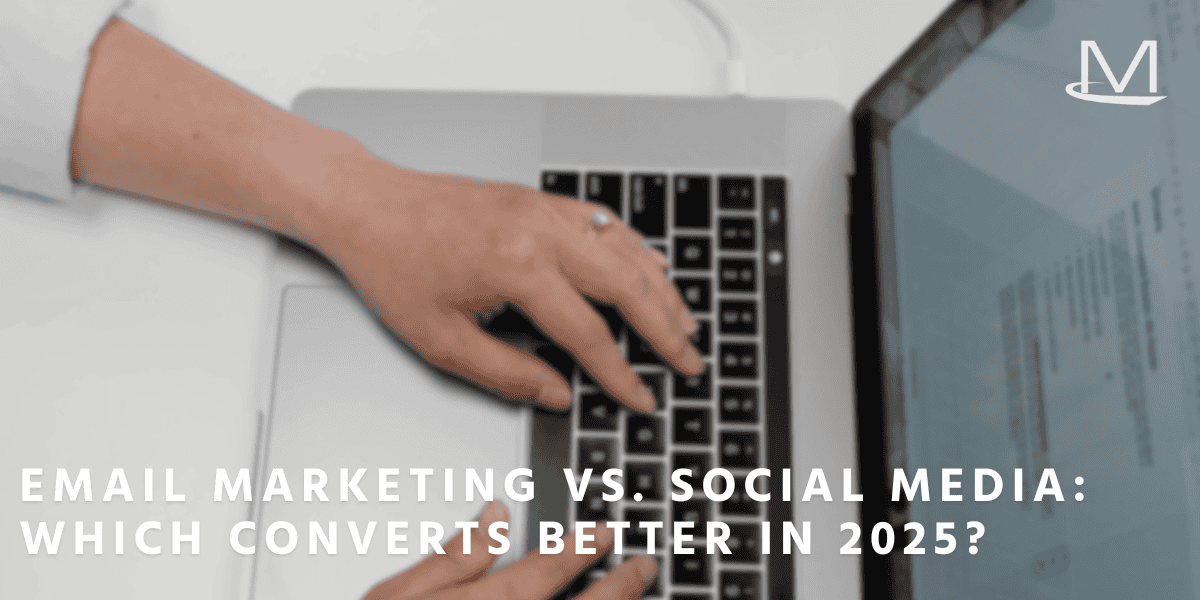
30 May Email Marketing vs. Social Media: Which Converts Better in 2025?
In today’s fast-paced digital world, brands have more ways than ever to connect with their audiences. Two of the most powerful tools in any marketing toolkit are email marketing and social media. Both channels offer unique advantages, but when it comes to conversions – turning interested viewers into paying customers or loyal subscribers – which one truly delivers better results in 2025?
In this post, we’ll break down the strengths, challenges, and conversion potential of both email marketing and social media, so you can make informed decisions for your business’s digital strategy.
The State of Email Marketing in 2025
Email marketing has been a reliable performer for decades, and in 2025, it remains one of the most cost-effective and impactful ways to nurture leads and drive conversions. Despite the ever-changing landscape of digital marketing tools and platforms, email remains a trusted and direct line to your audience.
Modern email campaigns are smarter, more personalized, and better timed than ever before, thanks to AI-powered tools and detailed analytics. Businesses of all sizes – from startups to global brands – rely on email to stay connected with customers, promote offers, and build long-term relationships.
Here’s why email marketing continues to thrive in 2025:
High ROI
According to recent studies, email marketing consistently delivers one of the highest returns on investment among digital marketing channels, with an average ROI of $42 for every $1 spent. This makes it a no-brainer for businesses aiming to maximize their marketing budgets while maintaining meaningful engagement with their audience.
With minimal overhead costs and the ability to scale campaigns efficiently, email remains a top choice for marketers looking to stretch their dollars.

Direct, Personalized Communication
Today’s email marketing tools allow for advanced segmentation, behavior tracking, and automation, enabling businesses to send highly relevant, timely, and tailored messages directly to their subscribers’ inboxes.
Whether it’s a personalized product recommendation, an abandoned cart reminder, or a birthday discount, these one-to-one messages help brands connect with customers on a more personal level. The result is higher open rates, increased click-throughs, and stronger customer loyalty.
Owned Audience
Unlike social media platforms, where shifting algorithms dictate how often your followers see your content, your email list is an asset you fully own and control. This gives businesses the freedom to decide when and how to communicate with subscribers, without worrying about external platform changes or pay-to-play visibility.
In an era where digital real estate is rented, owning your audience through email remains one of the most valuable assets in your marketing toolkit.
Long-Term Relationship Building
Email marketing excels at nurturing long-term relationships. While social media often focuses on quick interactions and trends, email allows brands to foster deeper connections through consistent, meaningful communication. Newsletters, exclusive offers, and personalized updates build trust over time, keeping your brand top-of-mind when customers are ready to buy.
Seamless Integration with Other Marketing Channels
Another advantage of email marketing is how easily it integrates with other digital strategies. Whether you’re promoting new blog posts, announcing social media contests, or sharing exclusive video content, email serves as a reliable hub that directs traffic across your other platforms. In 2025, successful marketing campaigns are those that use email as the foundation for multichannel engagement.
Conversion Power of Email Marketing
Email marketing excels in driving conversions because it speaks to a captive, permission-based audience. People on your list have already expressed interest in your brand, making them more likely to act when presented with a compelling offer. Key tactics that enhance email conversion rates in 2025 include:
- Personalized subject lines and content
- Dynamic product recommendations based on user behavior
- Automated drip campaigns for lead nurturing
- Cart abandonment emails with exclusive offers
- Interactive email elements like polls, quizzes, and countdown timers
The Role of Social Media in 2025
Social media continues to evolve at lightning speed. Platforms like Instagram, TikTok, LinkedIn, and Facebook remain essential for brand awareness, community building, and customer engagement.
Social Media’s Conversion Strengths
Social media platforms offer benefits that email simply can’t match:
- Broad Audience Reach: Platforms can instantly connect brands with millions of users.
- Visual Storytelling: Video content, reels, and stories capture attention and communicate brand personality quickly.
- Influencer Collaborations: Partnering with trusted personalities boosts credibility and drives interest.
- Real-Time Interaction: Responding to comments, hosting live Q&As, and participating in trending conversations fosters immediate engagement.
In 2025, social commerce – the integration of eCommerce with social media – continues to grow. Features like Instagram Shops, Facebook Marketplace, and TikTok Shop simplify the path from product discovery to purchase.
Brands also face challenges with ad fatigue and increasing competition for user attention. Despite this, social media remains a powerful tool for reaching new audiences and sparking initial interest that can lead to conversions when integrated with other marketing strategies.

Conversion Challenges on Social Media
While social media is fantastic for visibility and engagement, converting followers into customers can be tricky:
- Algorithm Dependency: Organic reach is often limited, requiring paid ads for consistent visibility.
- Distraction-Prone Environment: Users are easily diverted by endless content options.
- Lower Intent Audience: Social media users may follow a brand casually without immediate purchase intent.
Email Marketing vs. Social Media: By the Numbers
To truly understand which channel converts better in 2025, let’s look at the data:
- Email marketing conversion rates average 6.5%, according to recent industry reports.
- Social media conversion rates hover around 1.5% across most platforms.
While these numbers can vary by industry and campaign type, email consistently outperforms social media in terms of direct conversions.
However, it’s important to note that social media often plays a crucial role in the early stages of the customer journey, building awareness and driving traffic to owned assets like websites and email lists.
How to Leverage Both for Maximum Results
The smartest digital marketing strategies in 2025 aren’t about choosing one channel over the other — they focus on integrating both email marketing and social media to harness their complementary strengths. Combining these channels allows brands to create a seamless and cohesive customer journey that maximizes engagement and conversions.
Combine Strengths:
Use social media to grow your email list by promoting exclusive content, giveaways, or subscriber-only discounts that incentivize followers to subscribe. These tactics help capture interested leads who can be nurtured further through personalized email campaigns. Additionally, retarget social media ad audiences with tailored email campaigns, providing a more direct and personal follow-up that boosts conversion potential.
On the flip side, repurpose your best-performing email content into engaging social media posts to reinforce your key messages and reach a wider audience. This approach amplifies the impact of your content without requiring constant new creation.
Align Messaging:
To create a truly integrated strategy, ensure your brand’s tone, promotions, and visuals are consistent across both platforms. This alignment improves brand recognition, builds trust, and presents a unified experience for your audience, no matter where they interact with your business. Coordinated messaging also helps avoid confusing or contradictory communications that could dilute your brand’s impact.
Track & Optimize:
Use advanced analytics tools to monitor performance on both channels, from open and click rates in emails to engagement and conversion metrics on social media. These insights reveal what types of content, timing, and offers resonate best with your audience.
By continuously tracking these metrics, you can adjust your strategies to improve targeting, messaging, and creative execution. Experiment with A/B testing in both email and social media to refine headlines, visuals, and calls to action.

Ready to Turn Clicks into Customers? Let’s Talk Strategy
In 2025, email marketing remains the conversion king, but social media remains essential for visibility and engagement. The key is to stop thinking of them as either/or and start using them together—strategically and consistently.
At McWilliams Media, we help businesses develop integrated marketing strategies that combine the strength of email and social media to drive real results. Whether you need help building a better email list, writing high-converting campaigns, or boosting your social presence, we’re here to guide the way. Let’s create a digital strategy that works with your business goals, not against them!








